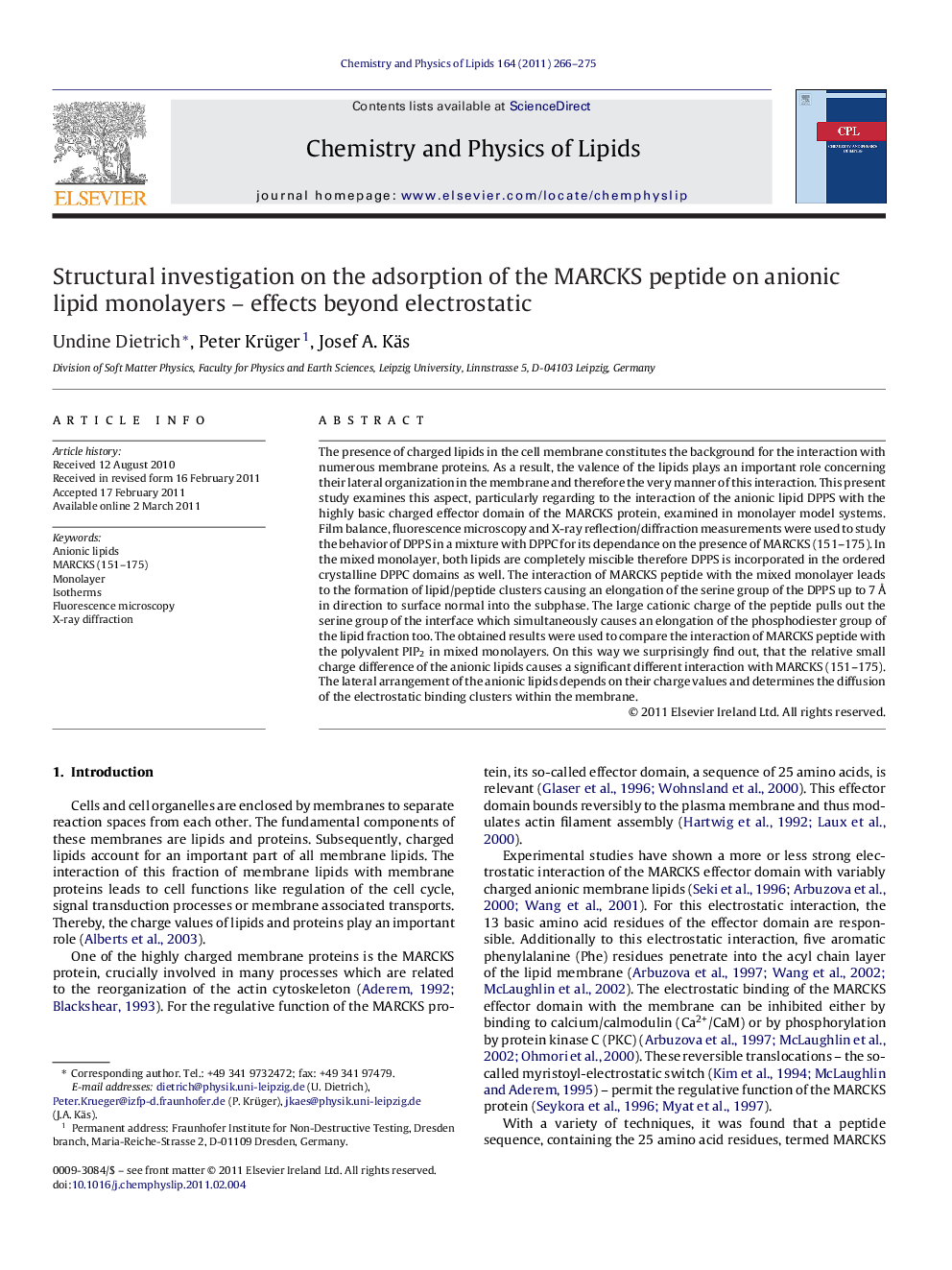| Article ID | Journal | Published Year | Pages | File Type |
|---|---|---|---|---|
| 1251914 | Chemistry and Physics of Lipids | 2011 | 10 Pages |
The presence of charged lipids in the cell membrane constitutes the background for the interaction with numerous membrane proteins. As a result, the valence of the lipids plays an important role concerning their lateral organization in the membrane and therefore the very manner of this interaction. This present study examines this aspect, particularly regarding to the interaction of the anionic lipid DPPS with the highly basic charged effector domain of the MARCKS protein, examined in monolayer model systems. Film balance, fluorescence microscopy and X-ray reflection/diffraction measurements were used to study the behavior of DPPS in a mixture with DPPC for its dependance on the presence of MARCKS (151–175). In the mixed monolayer, both lipids are completely miscible therefore DPPS is incorporated in the ordered crystalline DPPC domains as well. The interaction of MARCKS peptide with the mixed monolayer leads to the formation of lipid/peptide clusters causing an elongation of the serine group of the DPPS up to 7 Å in direction to surface normal into the subphase. The large cationic charge of the peptide pulls out the serine group of the interface which simultaneously causes an elongation of the phosphodiester group of the lipid fraction too. The obtained results were used to compare the interaction of MARCKS peptide with the polyvalent PIP2 in mixed monolayers. On this way we surprisingly find out, that the relative small charge difference of the anionic lipids causes a significant different interaction with MARCKS (151–175). The lateral arrangement of the anionic lipids depends on their charge values and determines the diffusion of the electrostatic binding clusters within the membrane.
